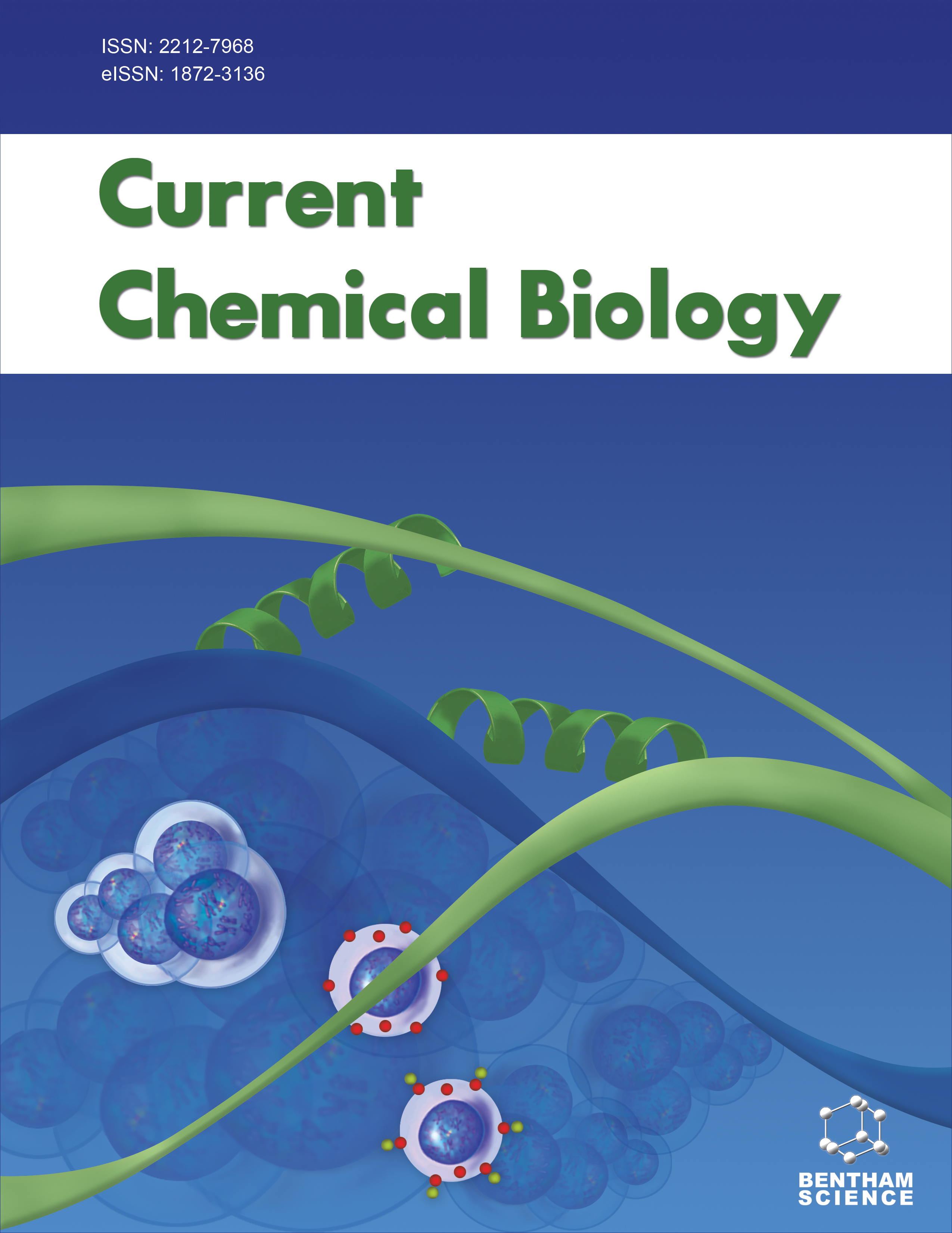- Home
- A-Z Publications
- Current Chemical Biology
- Previous Issues
- Volume 2, Issue 1, 2008
Current Chemical Biology - Volume 2, Issue 1, 2008
Volume 2, Issue 1, 2008
-
-
Towards the Targeted Modulation of Gene Expression by Modified Triplex-Forming Oligonucleotides
More LessAuthors: Keith R. Fox, David A. Rusling, Victoria J. Broughton-Head and Tom BrownDNA triple helices are formed when a third nucleic acid strand binds within the major groove of a DNA duplex. The formation of these structures can be used to achieve selective recognition of extended DNA sequences, which may be useful in several medical and biotechnological applications. Although triplex formation is relatively straightforward in vitro, there are several problems that limit its use in cellular conte Read More
-
-
-
Towards Understanding the Roles of Prohibitins, Multi-Functional Regulator Proteins
More LessAuthors: Andreas Hofmann and Anja WinterProhibitins comprise a family of highly conserved ubiquitous eukaryotic proteins that localise to different compartments of the cell. They have been implicated in important cellular processes such as cellular signalling and transcriptional control, apoptosis, cellular senescence, early development of Caenorhabditis elegans and mitochondrial biogenesis. In yeast, mammals and C. elegans there exist at least two homologous prohibit Read More
-
-
-
Inhibitors of Multisubunit RNA Polymerases as Tools to Study Transcriptional Mechanisms in Prokaryotes and Eukaryotes
More LessSmall molecule inhibitors of multisubunit RNA polymerases (RNAP) have emerged as powerful tools for the study of transcriptional mechanisms in both prokaryotes and eukaryotes. Here, we review studies in which RNAP inhibitors such as α-amanitin, rifampicin and streptolydigin were used to reveal key molecular aspects of the transcription reaction and catalytic mechanisms of RNAP. Many of the most significant findings, that Read More
-
-
-
How (and Why) to Revive a Dead Enzyme: The Power of Chemical Rescue
More LessChemical rescue is an experimental strategy whereby the activity of a mutant enzyme is restored upon the addition of small exogenous compounds, which somehow surrogate the function of the mutated residue. These molecules become in effect “probes” of the chemical and structural requirements for efficient catalysis by the mutant enzyme. Entire batteries of small compounds can be tested for rescue, mak Read More
-
-
-
Trends and Challenges in Directed Evolution
More LessAuthors: Ismael Bustos-Jaimes and Carmina MontielOne of the convergence points of chemistry and biology is the synthesis of fine chemicals using enzymes as catalysts. Since many of these catalysts are not very efficient in typical conditions for organic synthesis, directed evolution has emerged in the last fifteen years as a powerful tool to improve the activity, selectivity and stability of enzymes. Directed evolution methods have been widely and successfully applied in the Read More
-
-
-
GIP-Based Therapeutics for Diabetes and Obesity
More LessAuthors: Victor A. Gault, Nigel Irwin and Peter R. FlattGlucose-dependent insulinotropic polypeptide (GIP or gastric inhibitory polypeptide) is a gut-derived incretin hormone which regulates glucose-induced insulin secretion. In addition to its actions on pancreatic beta-cells, GIP exerts a range of secondary extrapancreatic activities, which further augments its antihyperglycaemic properties. As such, GIP has attracted attention as a potential therapeutic agent for the treatm Read More
-
-
-
Emerging Roles for Metabolic Engineering - Understanding Primitive and Complex Metabolic Models and Their Relevance to Healthy and Diseased Kidney Podocytes
More LessThe central metabolism of a cell can determine its short- and long-term structure and function. When a disease state arises, the metabolism (i.e., the transportation of nutrients into the cells, the overall substrate utilization and production, synthesis and accumulation of intracellular metabolites, etc.) is altered in a way that may permit organisms to survive under the changing physiologic constraints. Although the res Read More
-
-
-
Chemical Communication: A Visit with Insects
More LessAuthors: Smita Mohanty, Joshua R. Ring and Rabi K. PrustiFundamental to the behavioral biology, organisms have the ability to detect and respond to chemical stimuli. Olfactory signal transduction and information processing in insects (e.g., moths) is a prime example of chemical communication found in nature for its exquisite sensitivity and selectivity. Although not completely understood yet, extensive research on the biology and chemistry of this complex event has revealed Read More
-
Volumes & issues
Most Read This Month
Article
content/journals/ccb
Journal
10
5
false
en


